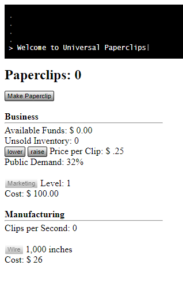Taking charge of your professional development
87% of millennials (as much as I hate the term) rate professional development as important to them on the job. I would hazard a guess that most employees would agree with this. Despite this, many organizations are less and less willing to invest in professional development for their staff.
As a insatiably curious person, this can be challenging for me. I constantly want to learn, to network, to share knowledge. Professional development is extremely important to me and has been throughout my career, though I’ve frequently been in the position where development budgets are cut and support is restricted.
Rather than let this discourage me, I’ve taken charge of my own development. If I’m not willing to invest, why would my employer be? Knowing I like to attend events and conferences, I’ve started to seek out low-cost ways to do this. I’m involved with industry organizations and frequently volunteer time in exchange for passes to events. Some industry conferences provide free registration for speakers, so I propose sessions to conferences I’d like to attend. I program PD events in my area and am able to attend these at no monetary cost. I’ve found my companies more willing to give me a PD day here and there than they are to approve budget for tuition or registration feeds. I make use of free resources at the library, read LinkedIn voraciously, join open slack channels, buy books on sale, and constantly seek out new low-cost opportunities to learn.
Even with all this, sometimes I do still want to attend an event or course where I can’t get a discount. To cover these things, I have a personal PD budget. I set up a separate savings account, and auto-deposit 3% of my pay for professional development. I’m able to draw from this fund to cover costs that I can’t cover other ways. It’s a big priority for me, and so I invest in this area. I have found that since I started doing this, I’ve been able to advance significantly in my career. If you’re struggling with getting the development you need and want, give this approach a try!






